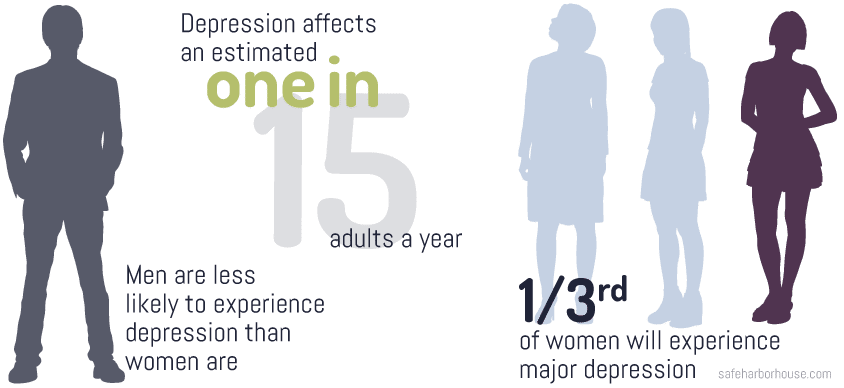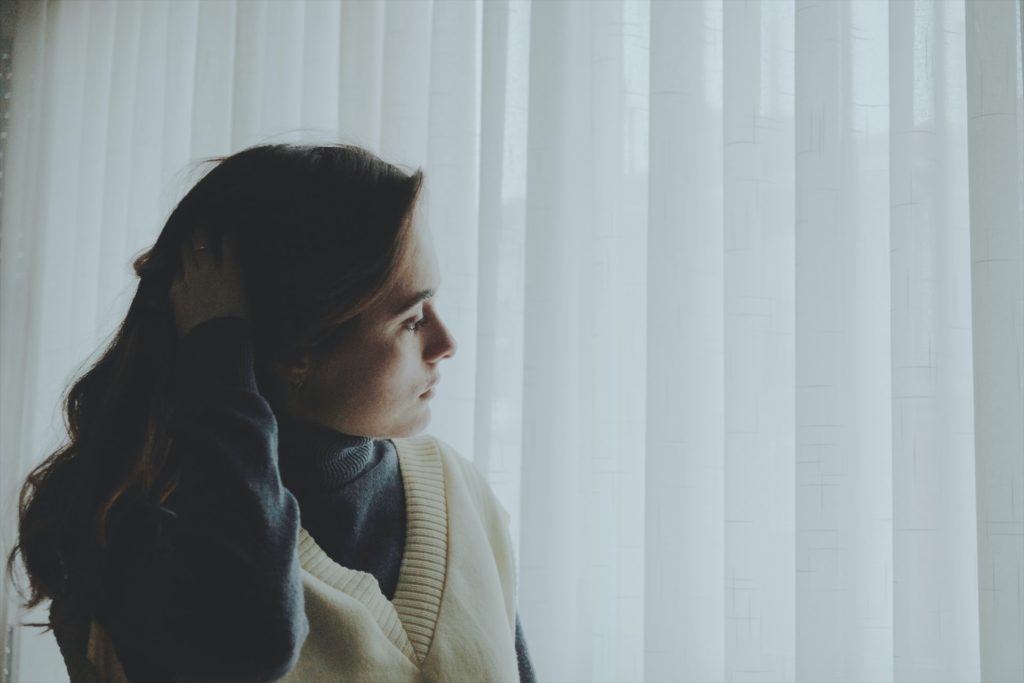Depression
Depression
One in every six adults will have depression at some point in their life, according to the Centers for Disease Control and Prevention. It is possible to get depression at any age, whether as a teenager or as a child. The sooner help is received, the better. The longer depression lasts, the more likely it will disrupt life and become a long-term problem.
A person who experiences depression can also have another mental health problem such as anxiety. A person who has anxiety disorder can struggle with uncontrollable and intense feelings of fear, worry, and panic. These feelings can last for a long time and interfere with daily activities. Let’s look more closely at the definition of depression, statistics on the condition, types of depression, causes, frequent co-occurring illnesses, and treatment options.
What is Depression?
Depression is a serious medical illness that can affect how a person feels, thinks, and acts. The illness causes a person to feel sad and lose interest in activities they once enjoyed, and associated with it can be physical and emotional problems. A depressed person can have problems functioning at home and also at work. Fortunately, the illness is treatable.
For a diagnosis of depression, a person must have symptoms for a minimum of two weeks. As other medical conditions can mimic the symptoms of depression, it is important to rule out these medical causes. This includes brain tumor, thyroid problems, and vitamin deficiency,
- Studies show 1/3 of women will experience depression in their lifetime.
- Depression affects an estimated one in 15 adults (6.7%) a year.
- One in six people (16.6%) experience depression at some point in their life.
- Depression on average first appears during the late teens to mid-20s.
- Men are less likely to experience depression than women.
- Depression can strike at any time and any age.

Depression by the Numbers
- Major depressive disorder affects approximately 17.3 million American adults.
- Every year, it affects approximately 7.1% of the U.S. population age 18 and older.
- Out of 1.9 million children, ages 3 to 17 are diagnosed.
- In 2013–2016, 8.1% of American adults had depression over a given two-week period.
- Depression was almost twice as common among women as in men.
- About 80% of adults with depression reported difficulty with social, home, and work activities due to the symptoms of depression.
- Depression prevalence did not differ according to age.
- Non-Hispanic Asian adults had the lowest prevalence of depression.
- As family income levels decreased, the proportion of adults with depression increased.
- Populations considered at higher risk for depression include those in nursing homes or other institutions.
- Major depression is associated with greater functional impairment and higher societal cost when compared to other chronic diseases such as arthritis and diabetes.
Depression by the Numbers


Types of Depression
Premenstrual dysphoric disorder patients can have depression when their period starts and have symptoms such as anxiety, trouble concentrating, mood swings, irritability, and fatigue.
Symptoms of Depression
The symptoms can include:
• Thoughts of Suicide
• Feeling Worthless
• Great Fatigue
• Weight Loss
• Difficulty Thinking
• Slowed Speech
• Trouble Sleeping
• Weight Gain
• Difficult Decisions
• Loss of Energy
• Trouble Waking
• Loss of Pleasure
Weight loss, sleep problems, and low energy are common symptoms of depression and may occur in those with heart disease, cancer, stroke, diabetes, thyroid disease, and some neurological disorders.
For those who have Parkinson’s disease and Alzheimer’s disease, poor concentration, memory loss, and apathy are common symptoms of depression. For those taking medication for Parkinson’s disease, high blood pressure, or other medical conditions, sides effects of the medication can be similar to symptoms of depression.
Causes of Depression
Depression is a complex disease and no one knows its exact cause. It can occur due to many reasons, such as during a serious physical illness, after the death of a loved one, or a family history of depression.
Some of the other factors that can increase the likelihood of depression include:
• A history of physical, sexual, or emotional abuse
• Medications including corticosteroids
• Conflict due to disputes with friends or family
• Events such as getting divorced, retiring, moving, or losing a job
• Personal problems
• Substance abuse

Dual Diagnosis: Frequent Co-occurring Illnesses
The risk of clinical depression can be higher in those who have a serious medical illness. This can include cancer, heart disease, stroke, and diabetes. Patients and family members can disregard the warning signs of clinical depression; however, it is a mistake to assume that a feeling of depression is normal when suffering with such a serious medical condition. Other medical conditions can mask the symptoms of depression as the illness gets treated but the underlying depression is not being treated.
Depression is not normal if a patient has another illness, and treatment for both the depression and the illness is needed. The more severe the illness, the more likely is the chance of getting depression. People with depression experience great distress, less ability to follow medical regimen, and impaired functioning that hinders the treatment of other medical conditions.
Instead of going to a mental health professional, nearly 74 percent of Americans go to a primary care physician to get help for depression or symptoms of depression. If an individual is hospitalized for a medical illness, the rate of depression is estimated at 10 to 14 percent. In a primary care setting, the rate of depression for those with a medical illness is estimated at 5 to 10 percent and a diagnosis of depression is missed 50 percent of the time.
Why does depression often occur together with medical illnesses? A person can become clinically depressed as a reaction to a prognosis, or as a reaction to the pain, symptom of a medical condition, or treatment. A medical disorder can contribute biologically to depression, but depression and a medical illness could also be unrelated.
Depression occurs in 40 to 65 percent of patients who have experienced a heart attack. Depression occurs in 18 to 20 percent of people who have coronary heart disease, but who have not had a heart attack.
After a heart attack, patients with clinical depression have a three to four times greater chance of death within the next six months. Men and women with depression are at increased risk for coronary artery disease, but only men are at greater risk of dying.
Dual Diagnosis: Frequent Co-occurring Illnesses
Finding Help at a Depression Treatment Center in
Orange County

We Work With Most Major
Insurance Providers
The Safe Harbor Treatment Center Admissions Team works to ensure that we can help as many people struggling with substance abuse. Verify your benefits now and we’ll get back to you right away.
Receive the highest level of care available at Safe Harbor. We are here to answer your call or fill out our confidential contact form to get started.
https://www.cdc.gov/tobacco/campaign/tips/diseases/depression-anxiety.html
https://www.psychiatry.org/patients-families/depression/what-is-depression
https://www.dbsalliance.org/education/depression/statistics/
https://www.mentalhealthamerica.net/conditions/co-occurring-disorders-and-depression
https://www.nami.org/Learn-More/Mental-Health-Conditions/Depression/Treatment
https://www.cdc.gov/nchs/products/databriefs/db303.htm
https://www.cdc.gov/tobacco/campaign/tips/diseases/depression-anxiety.html

